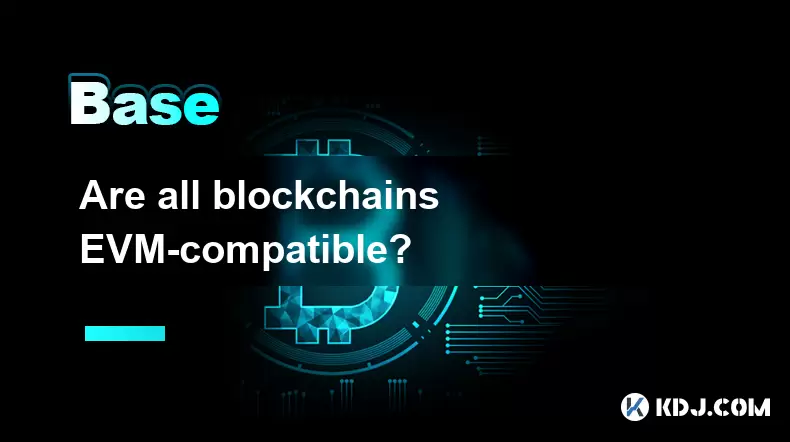-
 Bitcoin
Bitcoin $117400
0.05% -
 Ethereum
Ethereum $3767
0.13% -
 XRP
XRP $3.554
2.85% -
 Tether USDt
Tether USDt $1.000
0.01% -
 BNB
BNB $766.5
1.11% -
 Solana
Solana $196.6
8.51% -
 USDC
USDC $0.0000
0.01% -
 Dogecoin
Dogecoin $0.2716
-0.23% -
 Cardano
Cardano $0.8901
3.81% -
 TRON
TRON $0.3144
0.09% -
 Hyperliquid
Hyperliquid $44.52
-3.11% -
 Stellar
Stellar $0.4735
2.59% -
 Sui
Sui $3.978
2.18% -
 Chainlink
Chainlink $19.59
1.45% -
 Hedera
Hedera $0.2715
0.05% -
 Avalanche
Avalanche $25.48
1.87% -
 Bitcoin Cash
Bitcoin Cash $523.6
-4.49% -
 Shiba Inu
Shiba Inu $0.00001551
0.09% -
 Litecoin
Litecoin $115.9
-0.92% -
 UNUS SED LEO
UNUS SED LEO $8.992
0.06% -
 Toncoin
Toncoin $3.336
2.13% -
 Polkadot
Polkadot $4.510
0.70% -
 Uniswap
Uniswap $10.91
2.37% -
 Ethena USDe
Ethena USDe $1.001
0.02% -
 Pepe
Pepe $0.00001421
1.31% -
 Monero
Monero $320.2
-1.73% -
 Bitget Token
Bitget Token $4.950
0.14% -
 Dai
Dai $0.0000
-0.02% -
 Aave
Aave $323.3
0.00% -
 Bittensor
Bittensor $447.5
8.38%
Are all blockchains EVM-compatible?
EVM compatibility allows blockchains to run Ethereum smart contracts, enabling seamless dApp deployment across networks like BSC and Polygon.
Jul 21, 2025 at 12:07 pm

Understanding EVM Compatibility
The Ethereum Virtual Machine (EVM) is the runtime environment for smart contracts in Ethereum. EVM compatibility refers to whether a blockchain can execute the same smart contracts as Ethereum without requiring significant changes to the codebase. This compatibility allows developers to deploy their Ethereum-based decentralized applications (dApps) on other blockchains seamlessly. However, not all blockchains are designed to be EVM-compatible.
Types of Blockchains and Their Compatibility
Blockchains can broadly be categorized into two groups: EVM-compatible chains and non-EVM-compatible chains. Chains like Binance Smart Chain (BSC), Polygon, Avalanche, and Fantom are examples of EVM-compatible blockchains. These chains replicate the EVM environment, enabling developers to use Ethereum tools such as Solidity, Truffle, Hardhat, and MetaMask without significant modifications.
In contrast, blockchains like Solana, Polkadot, and Cardano are not EVM-compatible. Solana uses its own virtual machine called the Berkeley Packet Filter (BPF), while Polkadot uses a framework called Substrate that supports multiple virtual machines but not EVM by default. Cardano uses a different architecture based on Haskell and Plutus, which is not compatible with EVM standards.
Why Some Blockchains Are Not EVM-Compatible
The decision to be EVM-compatible or not is often rooted in design philosophy, scalability goals, and performance considerations. For example, Solana was designed for high throughput and low latency, which led to the development of a custom virtual machine optimized for speed. Polkadot’s Substrate framework allows developers to build custom blockchains with modular components, but this flexibility comes at the cost of not being inherently EVM-compatible.
Another reason is intellectual property and licensing concerns. Some projects may choose not to implement EVM compatibility to avoid potential legal issues or to differentiate themselves in a competitive market. Additionally, non-EVM blockchains often introduce new programming languages and tools, which can offer unique features but require developers to learn new ecosystems.
How to Determine If a Blockchain Is EVM-Compatible
To determine if a blockchain is EVM-compatible, developers can perform the following checks:
- Check if the blockchain uses the Ethereum yellow paper specifications for transaction processing and state transitions.
- Verify if the blockchain supports Solidity or Vyper smart contracts.
- Test deployment of an Ethereum-based dApp on the target blockchain using tools like Hardhat or Truffle.
- Ensure that the blockchain supports Ethereum wallets like MetaMask.
- Confirm that the blockchain uses the same address format and cryptographic standards as Ethereum.
By following these steps, developers can ensure that the target blockchain is capable of executing Ethereum-based smart contracts without modification.
Tools and Frameworks for EVM-Compatible Development
Developers working on EVM-compatible chains have access to a wide range of tools and frameworks. Hardhat and Truffle are popular development environments that allow for testing, compiling, and deploying smart contracts. Remix IDE provides a browser-based interface for writing and deploying Solidity code.
MetaMask is the most commonly used wallet for interacting with EVM-compatible chains, and it can be configured to connect to multiple networks. Foundry is another powerful toolkit for Ethereum smart contract development, offering fast compilation and testing capabilities.
For deployment, developers can use services like Etherscan or BscScan to verify and interact with deployed contracts. These tools also provide analytics and monitoring features that are essential for maintaining dApps.
Challenges of Non-EVM-Compatible Blockchains
Developing on non-EVM-compatible blockchains presents several challenges. First, developers must learn new programming languages and tools, which increases the learning curve. For example, Solana uses Rust and C for smart contract development, while Cardano uses Plutus and Marlowe.
Second, the ecosystem of tools and libraries is often smaller, which can slow down development and debugging. Third, interoperability with Ethereum-based dApps is limited, requiring additional bridges or wrappers to enable cross-chain communication.
Lastly, user adoption can be slower, as many users are already familiar with Ethereum wallets and tools. This means that non-EVM blockchains may struggle to attract both developers and users.
FAQs
Q: Can I make a non-EVM blockchain EVM-compatible?
A: Yes, it is technically possible to add EVM compatibility to a non-EVM blockchain through a layer or module that emulates the Ethereum Virtual Machine. However, this may introduce performance overhead and complexity.
Q: Are all EVM-compatible blockchains the same?
A: No, while they share EVM compatibility, each blockchain has its own consensus mechanism, network fees, and performance characteristics. Developers should evaluate these factors before deployment.
Q: Is EVM compatibility necessary for cross-chain interoperability?
A: Not necessarily. Cross-chain bridges and protocols like Chainlink CCIP or LayerZero can facilitate communication between EVM and non-EVM blockchains without requiring full EVM compatibility.
Q: Do EVM-compatible chains support Ethereum gas fees?
A: No, EVM-compatible chains use their own native tokens for gas fees. For example, BSC uses BNB, while Polygon uses MATIC. The gas pricing mechanism may also differ from Ethereum’s.
Disclaimer:info@kdj.com
The information provided is not trading advice. kdj.com does not assume any responsibility for any investments made based on the information provided in this article. Cryptocurrencies are highly volatile and it is highly recommended that you invest with caution after thorough research!
If you believe that the content used on this website infringes your copyright, please contact us immediately (info@kdj.com) and we will delete it promptly.
- Bitcoin, Trump Media, and Acquisition: A New York Perspective
- 2025-07-22 06:30:12
- Venture Capital, Crypto Treasuries, and Ethena (ENA): A New York Perspective
- 2025-07-22 06:50:13
- Solana: Building a Decentralized Nasdaq with Block Assembly Marketplace?
- 2025-07-22 06:30:12
- Jito, BAM, and Solana MEV: A New Era for Blockspace?
- 2025-07-22 06:50:13
- Trump Media, Bitcoin, and Congress: A New Era of Crypto Politics?
- 2025-07-22 04:30:12
- Whales, Momentum, and SHIB: What's the Deal?
- 2025-07-22 05:10:13
Related knowledge

What is the difference between CeFi and DeFi?
Jul 22,2025 at 12:28am
Understanding CeFi and DeFiIn the world of cryptocurrency, CeFi (Centralized Finance) and DeFi (Decentralized Finance) represent two distinct financia...

What is the difference between a sidechain and a Layer 2?
Jul 20,2025 at 11:35pm
Understanding the Concept of SidechainsA sidechain is a separate blockchain that runs parallel to the main blockchain, typically the mainnet of a cryp...

What is the Inter-Blockchain Communication Protocol (IBC)?
Jul 19,2025 at 10:43am
Understanding the Inter-Blockchain Communication Protocol (IBC)The Inter-Blockchain Communication Protocol (IBC) is a cross-chain communication protoc...

How does sharding improve scalability?
Jul 20,2025 at 01:21am
Understanding Sharding in BlockchainSharding is a database partitioning technique that is increasingly being adopted in blockchain technology to enhan...

What is the "crypto trilemma" of scalability, security, and decentralization?
Jul 19,2025 at 06:28pm
Understanding the Concept of the Crypto TrilemmaThe crypto trilemma refers to the challenge of simultaneously achieving scalability, security, and dec...

What is a cliff and vesting schedule in tokenomics?
Jul 20,2025 at 10:28am
What Does a Cliff Mean in Tokenomics?In tokenomics, a cliff refers to a specific period during which token holders are not allowed to access or transf...

What is the difference between CeFi and DeFi?
Jul 22,2025 at 12:28am
Understanding CeFi and DeFiIn the world of cryptocurrency, CeFi (Centralized Finance) and DeFi (Decentralized Finance) represent two distinct financia...

What is the difference between a sidechain and a Layer 2?
Jul 20,2025 at 11:35pm
Understanding the Concept of SidechainsA sidechain is a separate blockchain that runs parallel to the main blockchain, typically the mainnet of a cryp...

What is the Inter-Blockchain Communication Protocol (IBC)?
Jul 19,2025 at 10:43am
Understanding the Inter-Blockchain Communication Protocol (IBC)The Inter-Blockchain Communication Protocol (IBC) is a cross-chain communication protoc...

How does sharding improve scalability?
Jul 20,2025 at 01:21am
Understanding Sharding in BlockchainSharding is a database partitioning technique that is increasingly being adopted in blockchain technology to enhan...

What is the "crypto trilemma" of scalability, security, and decentralization?
Jul 19,2025 at 06:28pm
Understanding the Concept of the Crypto TrilemmaThe crypto trilemma refers to the challenge of simultaneously achieving scalability, security, and dec...

What is a cliff and vesting schedule in tokenomics?
Jul 20,2025 at 10:28am
What Does a Cliff Mean in Tokenomics?In tokenomics, a cliff refers to a specific period during which token holders are not allowed to access or transf...
See all articles

























































































